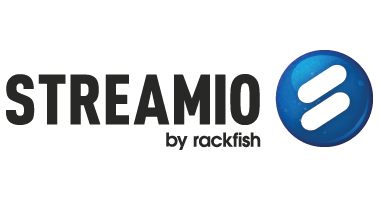We are constantly in contact with various companies, organizations and government agencies that use YouTube to publish their videos.
Many of them have created one or even several of their own YouTube channels, while others are content to post single videos on YouTube and then embed them on their own site.
At Streamio, we encourage all our customers to create their own channel on YouTube, as it’s a great way to make videos available in a place that a lot of people visit every day.
In addition, if you put a little extra gunpowder into how you categorize and tag your videos on YouTube, it can have a very positive impact on how high up your videos are found in different search results, both in YouTube and in Google.
However – we think it is also very important to really understand the difference between a platform and a channel.

What is a channel?
A channel is a path to one or more audiences that may be receptive to your message or information.
YouTube is a channel – an excellent channel in many respects, perhaps even one of the best for certain types of content.
However, YouTube is only one of several important channels.
Other important channels:
- Your own website (of course!)
- Campaign sites
- Video banners
- Mobile applications
- Your intranet
Then, of course, there is all social media, which are also important channels, including:
- Youtube
Which channel or channels you should choose depends, of course, entirely on the type of content (message or information) that you want to convey to which target groups.
Of course, you should always strive to make all videos available on your own website or in your own intranet.
However, there are no simple or unambiguous answers as to which other channels work best, but it simply depends – you need to test yourself and see which channels work best for you.
What is a platform?
A platform is the service on which you upload, store, organize and manage all your videos.
With the help of the platform, you can then publish and distribute your videos to one or more different channels, depending on what messages you want to convey and which target groups you want to try to reach.
Streamio is a platform – Streamio makes it fast, easy and very cost-effective to upload, store and manage all your videos in one place.
In addition to cost-effective video storage and smart video management, Streamio also makes it quick and easy to publish and distribute all your videos to all your most important channels, including YouTube and other social media.
In addition, Streamio also makes sure to collect statistics from all channels, so that you can more easily see in which channels your videos are shown the most.
One of the advantages of video on the web is that it is actually possible to see and measure what works, what really gets through – and what doesn’t.
By managing all storage, publishing and distribution (and statistics) from one place, using a platform, instead of manually uploading videos to lots of different channels/services, you not only save a lot of valuable time – you can also get a much better understanding of which channels actually work best for you.
Can’t I use YouTube as a video platform?
Yes and no. Well…
YouTube certainly gives you the ability to embed videos on websites and some other channels, such as social media.
But if you really want to keep track of and manage your videos in a professional way, YouTube as a platform has several limitations:
- If you don’t pay YouTube, there is an imminent risk of unwanted advertising appearing on your videos (not infrequently from direct competitors!)
- YouTube often recommends other videos that the viewer should see, leading the viewer away from your channel/page (and again, often towards your competitors).
- If you just embed YouTube videos in other social media, for example, you can’t get any statistics that show you in which channels your visitors watch them. All you know is that someone’s been looking somewhere…
- YouTube is, for various reasons, completely or partially blocked in a number of countries, including China.
There are many more limitations, of course, but the most important thing is probably that YouTube isn’t a platform, although it can be used like that – with all the limitations that this entails.
What can a video platform offer that YouTube can’t?
The great advantage, of course, is that everyone in your organization gets a common place, a common service, where all your videos can be uploaded, stored, organized and managed.
With a professional video platform like Streamio, everyone in your organization also gets a very user-friendly service that helps you publish and distribute your videos across all your channels, including various social media channels, with professional quality.
Other advantages:
- You can customize the appearance of the players who present your videos.
- You get access to a variety of other smart features, such as being able to build your own playlists and publish larger video archives.
- You can publish videos on your intranet or extranet, without having to worry about security – only authorized viewers will be given access to your videos.
- You can collect more statistics and better data for analysis and follow-up.
There are many advantages to a professional video platform, but perhaps the single biggest advantage is that it can simplify and streamline your daily work as well as save you lots of valuable time.
Just a few years ago, professional video platforms were quite expensive and technically complicated, leaving a large number of companies and organizations hesitant about whether it was really worth taking the plunge fully and investing in a video platform.
That is no longer the case.
Streamio is a very easy-to-use and smart video platform that offers all the benefits one would expect from a professional video service. In addition, Streamio offers market-leading low prices for all subscriptions, regardless of capacity needs or budget.
So, when it comes to the question of whether it’s really worthwhile for your company or your organization not to “just” use YouTube, but instead invest in a real and professional video platform, it’s in a way a trick question… 😉
Try it yourself and you’ll see.
Free of charge, of course.

